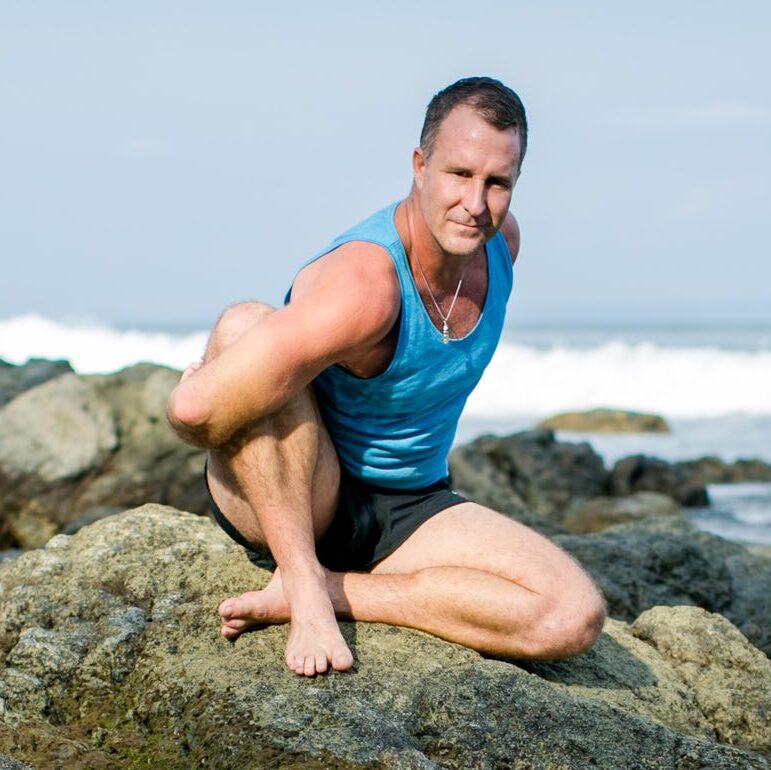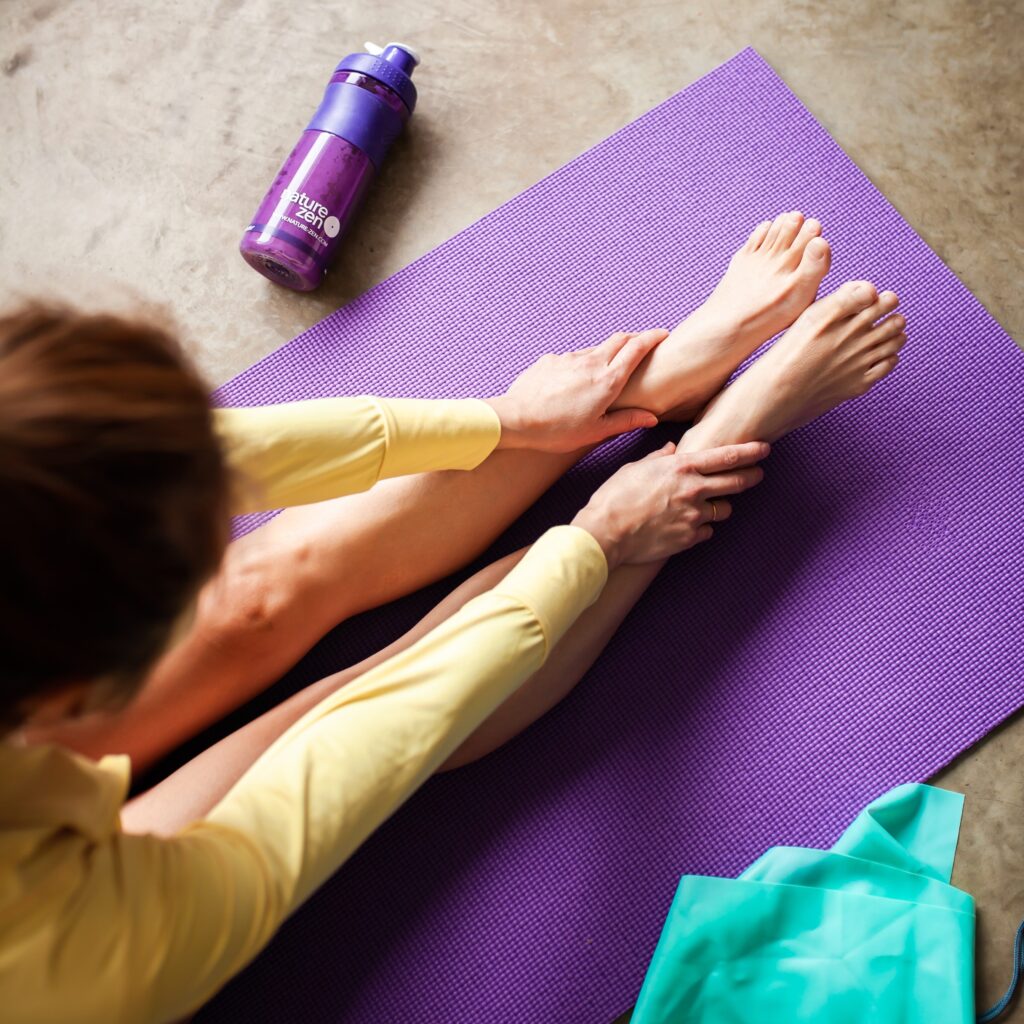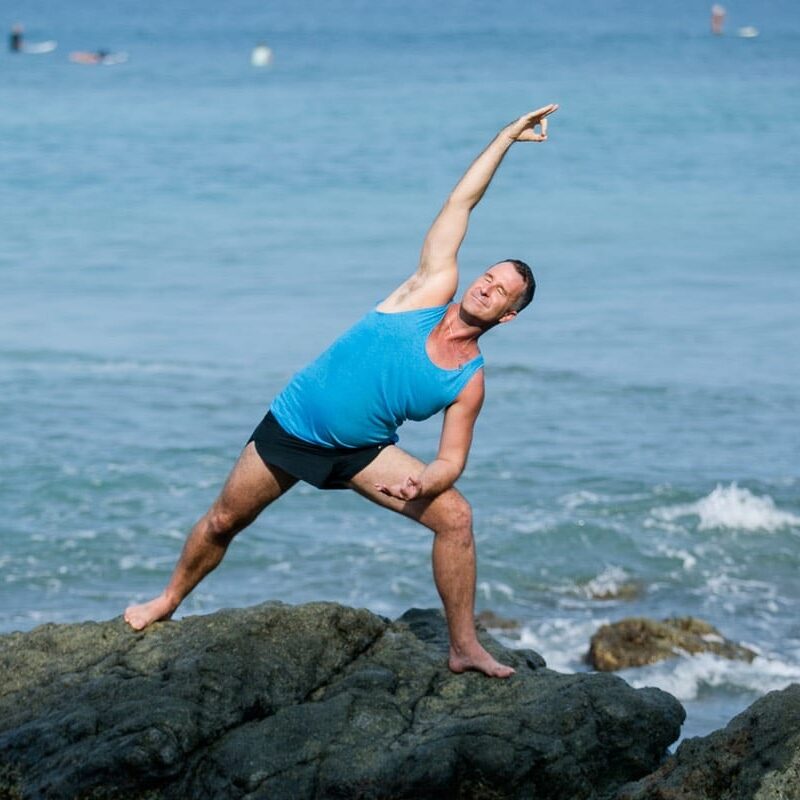Whether you’re a seasoned yogi or new to the practice, the benefits of yoga twists will enhance your overall well-being — and make you feel incredible!
If you’ve heard me teach before, you’ve likely heard me emphasize that twists are among the most spiritually transformative postures in yoga.
I know it’s a bold claim, but attend a yoga class with me, and you’ll quickly discover why twists give you precisely what you need when you need it — and why twisting postures are a precursor to any successful meditation practice.
Generally done toward the end of a yoga practice, twists are remarkable balancing postures.
According to the hatha yoga tradition, twists are the most balancing and spiritually engaging postures. Energetically, twists give you precisely what you need. Are you feeling too energized or wound up? Twists will calm and relax you.
Need an energy boost? Twisting postures can be more invigorating than a shot of espresso. The internal energy gained from twisting will last throughout the day, whereas a shot of espresso will peter off.
Ready to incorporate twists into your practice so that you can experience the profound benefits of yoga twists? Here’s what you need to know:
What are yoga twisting postures?

Yoga twisting postures involve rotating the torso and shoulders while keeping the hips and lower body stable. Twists are versatile, with variations ranging from gentle to advanced, and can be done in seated, standing, or supine positions.
Twists help balance the mind and body by stabilizing the spine and encouraging stillness. More specifically, the spine consists of 33 interlocking vertebrae and twisting postures promote rotation between them.
In fact, we twist our bodies constantly in our daily lives, whether we’re reaching for something or turning to look behind us.
Practicing twists in yoga can help us strengthen the key muscle groups needed for these movements, reducing the risk of injury and enhancing overall physical well-being. Let’s take a closer look at the benefits of twists in yoga:
What are the emotional benefits of twists in yoga?
1. Holding tension in our bodies can lead to emotional stress. Twists can help release that tension — and reduce stress and anxiety in the process.
2. Twists can increase energy levels by stimulating the nervous system. This can combat fatigue and sluggishness, leading to a more positive emotional state.
3. Practicing twists in yoga can have a mood-boosting effect. By releasing tension and improving circulation, twists can leave you feeling refreshed and rejuvenated!
What are the energetic benefits of twists in yoga?
1. According to yoga philosophy, energy flows through the body in channels called nadis; twists can help stimulate and balance the flow of this energy.
2. The spine is an important energy channel in the body. When it is tense, energy can become blocked. Twists help release tension in the spine, allowing for more free-flowing energy.
3. The Manipura chakra, located at the navel center, is associated with the element of fire and the qualities of confidence, willpower, and transformation. Twists can help stimulate this chakra, improving digestion and boosting confidence.
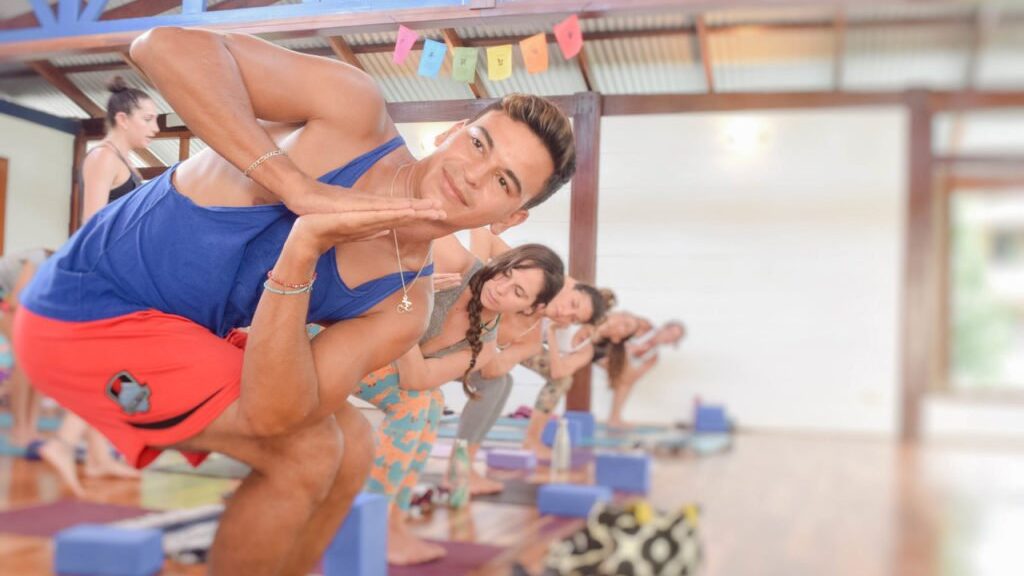
What are the physical benefits of twists in yoga?
1. Twists improve your overall nervous system functioning.
2. Twists improve digestion and elimination by increasing blood flow throughout the body.
3. Twists stimulate and compress important internal organs like the kidneys, adrenals, liver, gallbladder, pancreas, and spleen. This compression squeezes blood from the internal organs of the abdomen and pelvis.
4. The benefits of yoga twists include improving circulation to the spinal nerves, blood vessels, and tissues through the contraction of core muscles and the squeezing of internal organs.
5. Because of improved muscle engagement, twists not only tone the muscles of the trunk and spine but also improve the func-tion of the lymphatic system (the garbage-removal system of the body.)
The benefits of yoga twists according to AYAMA™
In AYAMA™, twists are essentially the same as trunk rotators — they use the same primary muscle groups to restore balance where there is asymmetry within the body.
Put another way, spinal trunk rotator activations stabilize the spine while helping the mind and body find equilibrium and stillness.
If we can get the trunk rotators firing correctly, we can positively impact all the other major and minor muscle groups that support the spine — and significantly improve our spinal health and mobility in the process.
5 Twisting postures to practice daily
When practicing these twisting postures, keep your spine erect and your shoulders level. Breathe steadily, and use this breath to move deeper into the postures and reap the benefits of yoga twists.

1. Simple Seated Twist
Begin by sitting on a few blankets or cushions for this seated twist. Come to a cross-legged position. (Cross the legs at the ankles. Do not sit in lotus or half lotus. From an AYAMA™ perspective, lotus and half lotus will weaken most people’s muscular system.)
Take your hands to opposite shoulders, then lift your elbows and extend (arch) through your lumbar spine. Twist as far as you can to the left. Hold for six seconds, and repeat six times. Then repeat on the right side.
2. Twisted Locust Pose
This is one of the best yoga poses for beginners. Lie on your stomach with your arms extended alongside your torso, palms facing up. Keep your legs on the ground and your gluteal muscles as relaxed as possible. Pause and reset if your legs begin to come off your mat or your gluteal muscles stiffen.
Now slightly lift your head and torso, and twist to the left. Allow your torso to lead the movement so you twist from your shoulders (not your neck).
Now continue to lift your torso as high as you can while simultaneously twisting. Release and repeat on the same side. Once you have completed six repetitions, repeat the activation on the other side.
3. Dynamic Lying Twist
Lie flat on your back. Bring your arms to your side in a cactus position, or interlace your fingers behind your head. Pull your knees into your chest; engage your core as you imagine you are bringing your pubic bone to your naval (belly button).
On the exhale, slowly drop your knees only halfway to the right side. Pause and pull your knees up toward your armpit. Keep your left shoulder blade firmly planted on the ground. Hold here for about six seconds.
On the inhale, bring your knees back to your chest. Repeat the exercise six times, then repeat the movement on the other side. This is one of my favorite exercises to understand the benefits of yoga twists!
4. Twisting Wide-Legged Forward Fold
Stand with your feet wide apart. Stretch your arms to your sides, parallel to the ground beneath you. Look down — the heels of your feet should be just under your wrists.
Squeeze your hips toward the midline, and slightly lift your pubic bone while pressing into the outsides of each heel. Look down again.
Now, draw an imaginary triangle from your feet to a point in front of you. On your next exhale, bend forward and twist, bringing your right hand to that imaginary point at the top of your triangle.
If there is any strain in the backs of the legs, bend your left knee as needed or put some yoga blocks under the right hand. Turn your head gently up to follow your left hand. If there is any strain on the neck, relax your head and look down.
On your inhale, return to your starting position. Repeat on the other side. Alternate for a total of six times on each side.
5. Ardha Matsyendrasana
According to The Hatha Yoga Pradipika:
“Practice of this Asana (posture) increases the digestive fire to such an incredible capacity that it is the means of removing diseases and thus awakening the serpent power and bringing equilibrium in the bindu. (crown of the head)”
This important yoga pose takes its Sanskrit name from a legendary teacher of yoga Matsyendra, who was believed to be one of the first founders of Hatha Yoga and hatha yoga twist sequences.
The Half Spinal Twist (Ardha Matsyendrasana) is a posture proving the incredible benefits of yoga twists.
This yoga spinal twist simultaneously stretches the muscles on one side of the back and abdomen while contracting the muscles on the other side. The compression of the spine improves nutrition to the intervertebral disks and squeezes blood out of the internal organs of the abdomen and pelvis, improving circulation to the spinal nerves, blood vessels and tissues.
The Half Spinal Twist is one of the best yoga poses with twists for cultivating flexibility and strength in the spine. It soothes the upper back tension and stiff neck caused by poor posture, stress, or prolonged periods of sitting in one position.
Regular practice of this yoga pose relieves lumbago (pain in the lower part of the back) and muscular spasms. The movement of this yoga pose tones the abdomen, thighs, buttocks, hips and spinal nerves. It massages and stimulates the kidneys, liver, gallbladder and spleen.
The movement of Ardha Matsyendrasana also tones the spinal nerves and ligaments and improves digestion.
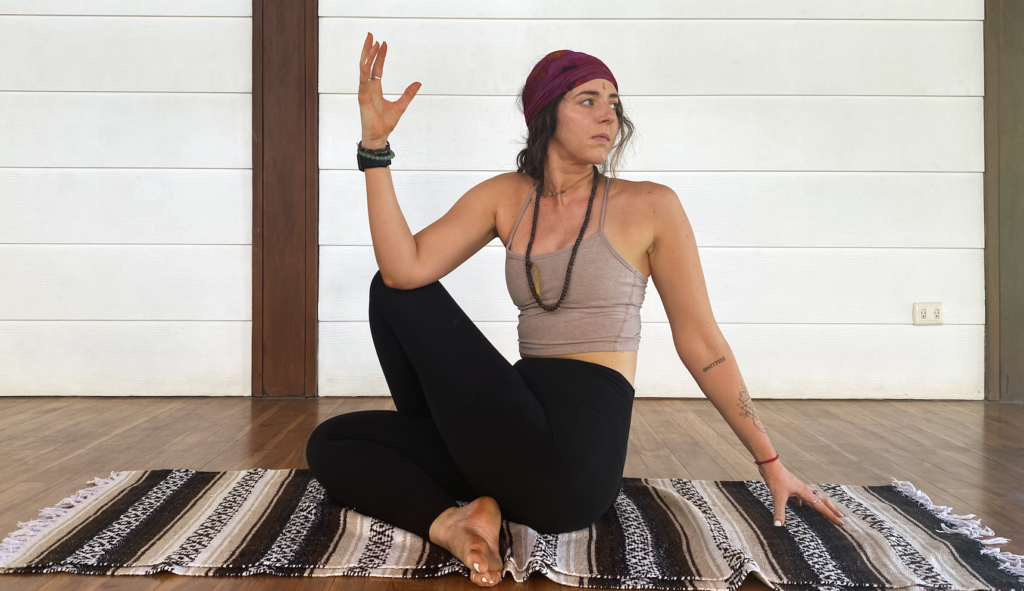
How to do Half Spinal Twist Yoga Pose (Ardha Matsyendrasana) for yoga twists benefits:
Step 1: Kneel down with your legs together, resting on your heels.
Step 2: Sit to the right of your feet
Step 3: Lift your left leg over your right, placing the foot against the outside of the right knee.
Bring your right heel in close to your buttocks. Keep the spine erect.
Step 4: Stretch your arms out to the sides at shoulder level and twist around to the left.
Step 5: Now bring the right arm down on the outside of the left knee and hold the left foot in the right hand, placing your left hand on the floor behind you. As you exhale, twist as far as possible to the left. Look over the left shoulder.
Tips to twist safely
There are three ways you can move deeper into your twists to experience the benefits of yoga twists without compromising your neuromuscular connection:
1. Stabilize your hips and rotate through your spine, letting your shoulders move with the rotation.
2. Stabilize your spine and rotate through your hips without letting your shoulders move.
3. Rotate your shoulders and hips in opposite directions to create a twist across the full length of your spine.
Note that using an outside force such as your arms, gravity, or a yoga strap is not a safe or effective method to deepen twisting postures. Using props pulls your body past its natural range of motion and disrupts your neuromuscular connection.
Instead, focus on contracting the active muscle through your leading side as you rotate through the spine. Any stretching that naturally occurs on the opposite side will remain within your body’s safe range of motion.
The entire spine does not have the same capacity for rotation. Move around a bit, and you’ll become acutely aware that mobility increases as we travel up the spine. Thoracic (middle to upper back) rotation is greater than lumbar (lower back) rotation, and your cervical spine (neck region) has the greatest rotation capacity of all.
Turn your head too quickly, and you might walk around with an irritating neck kink for days!
As you practice twists, pay close attention to moving your neck slowly and cautiously. The more you strengthen the muscles of the trunk and spine, the more you mitigate overuse, stress, and trauma in the head, neck, and shoulders.
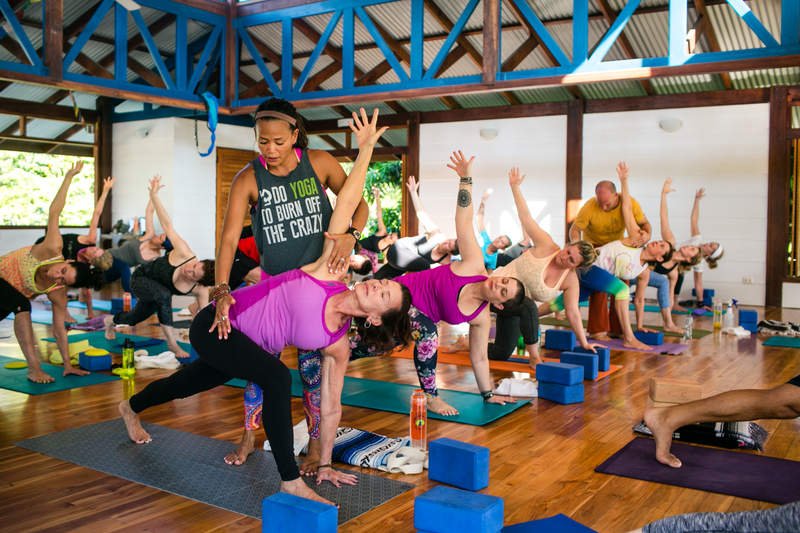
To sum it up
Incorporating yoga twists into your practice can provide a wide range of benefits, from physical to emotional and energetic. Whether you’re a seasoned yogi or just starting out, the benefits of yoga twists will enhance your overall well-being — and leave you feeling incredible!
Now . . . looking for the perfect setting to deepen your practice and experience the transformative benefits of yoga twists?
Our award-winning yoga retreat and spa provides a safe and comfortable space for you to reflect, relax, and renew while experiencing the lush and biodiverse surroundings of Costa Rica.
So, if you’re ready to take your yoga practice to the next level and experience the benefits of twists for yourself, consider joining us for one of our Costa Rica yoga retreats.
And if you’re ready to take your practice to the next level, consider taking a yoga teacher training with us at Blue Osa.
Explore all of our offerings and find the perfect match for you.



